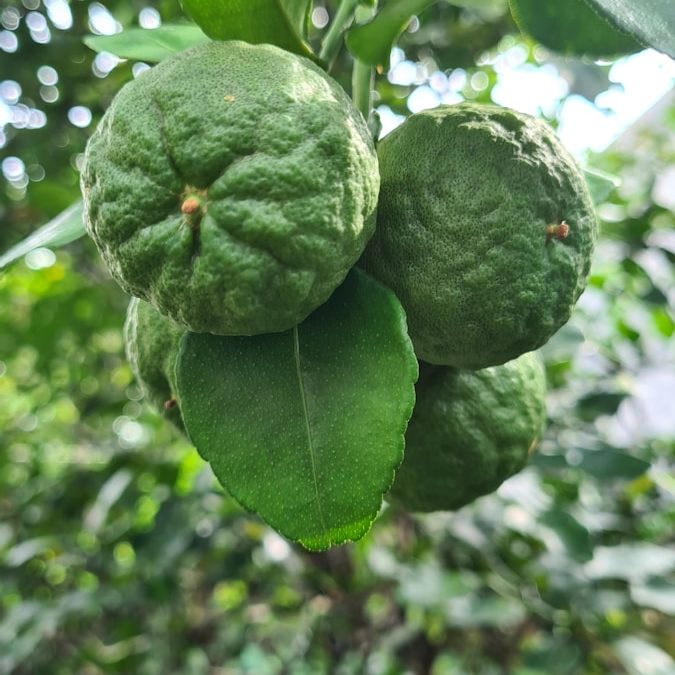Contents
- 1 How to Grow Indoor Kaffir Lime: Fragrant Leaves for Authentic Cooking
- 1.1 Why Grow Indoor Kaffir Lime?
- 1.2 Choosing and Planting Indoor Kaffir Lime
- 1.3 Essential Indoor Kaffir Lime Care Tips
- 1.4 Harvesting Kaffir Lime Leaves
- 1.5 Common Problems with Indoor Kaffir Lime
- 1.6 Creative Culinary Uses for Kaffir Lime Leaves
- 1.7 Decorating and Styling with Indoor Kaffir Lime
- 1.8 Frequently Asked Questions
- 1.9 Extra Growing Tips for Healthy Indoor Kaffir Lime
- 1.10 Recommended Products
- 1.11 Outbound Resource
- 1.12 Final Thoughts
How to Grow Indoor Kaffir Lime: Fragrant Leaves for Authentic Cooking
Kaffir lime (Citrus hystrix) is a must-have for any food lover who craves authentic Thai and Southeast Asian flavors. With its uniquely fragrant, double-lobed leaves, growing indoor kaffir lime allows you to elevate your dishes and enjoy a stunning tropical plant indoors. The glossy leaves add lush greenery to your home, while the citrus aroma makes your space feel fresh and inviting.
Why Grow Indoor Kaffir Lime?
Fresh, organic supply: Always have homegrown kaffir lime leaves on hand for curries, soups, and stir-fries.
Exotic appeal: The unique shape and aroma of kaffir lime leaves make them a standout addition to your indoor herb collection.
Tropical beauty: Bright, glossy green leaves create a lush, vibrant atmosphere indoors.
Natural air freshener: The citrus scent naturally refreshes the air in your home.
Educational and rewarding: Learn about citrus care while growing your own ingredients.
Choosing and Planting Indoor Kaffir Lime
Selecting a Plant
Purchase a healthy grafted kaffir lime plant from a reliable nursery to ensure strong growth and authentic leaves.
Avoid seeds, as they take years to mature and might not produce true-to-type leaves.
Potting Steps
Choose a deep pot (at least 30 cm) with drainage holes to prevent root rot.
Use a citrus-specific, well-draining potting mix enriched with organic compost.
Add gravel or small stones at the bottom for extra drainage support.
Essential Indoor Kaffir Lime Care Tips
Light: Needs at least 6–8 hours of bright, direct or indirect sunlight daily. A south-facing window or grow light works best for indoor kaffir lime.
Temperature: Prefers warmth (18–30°C). Protect from cold drafts and sudden temperature changes.
Watering: Allow the top 2–3 cm of soil to dry before watering again. Avoid waterlogged conditions.
Humidity: Thrives in moderate to high humidity. Mist leaves daily or use a pebble tray to maintain moisture levels.
Fertilizing: Use a citrus-specific fertilizer every 4–6 weeks during the growing season to ensure healthy, flavorful leaves.
Pruning: Prune regularly to shape the plant and encourage bushy, lush growth. Remove any yellowing or damaged leaves promptly.
Repotting: Repot every 2–3 years to refresh the soil and give roots more space.
Harvesting Kaffir Lime Leaves
Start harvesting once your plant has a robust canopy of mature leaves.
Pick individual leaves as needed for cooking; avoid stripping too many at once.
Store excess leaves in a freezer-safe bag to maintain their intense flavor for months.
Common Problems with Indoor Kaffir Lime
Yellow leaves: Usually caused by overwatering, nutrient deficiencies, or low light. Check watering schedule and move to a brighter spot.
Pest issues: Watch for scale insects, spider mites, and aphids. Use insecticidal soap and wipe leaves regularly to keep pests at bay.
Leaf drop: Often the result of sudden environmental changes or low humidity. Maintain stable conditions and high humidity.
Creative Culinary Uses for Kaffir Lime Leaves
Tear or slice fresh kaffir lime leaves into Thai curries and soups for authentic citrus flavor.
Infuse coconut milk with kaffir lime leaves for a fragrant base in Southeast Asian dishes.
Add to stir-fried vegetables or fried rice for a unique aromatic twist.
Use in homemade broths, stocks, or sauces to brighten up flavors.
Add to marinades for fish, chicken, or tofu to create exotic, zesty dishes.
Blend into cocktails and syrups for a refreshing, tropical hint.
Decorating and Styling with Indoor Kaffir Lime
Display in a ceramic or terra-cotta pot to emphasize its lush foliage.
Pair with other aromatic herbs like Thai basil, lemongrass, and mint for an indoor Asian-inspired herb garden.
Place in sunny kitchen corners for easy access and visual appeal.
Create a mini indoor citrus collection by grouping with dwarf lemon or calamondin plants.
Frequently Asked Questions
Can I grow indoor kaffir lime year-round? Yes! With adequate light and warmth, you can enjoy fresh kaffir lime leaves all year.
Will indoor kaffir lime produce fruit? It’s possible, but fruiting indoors is rare. The main culinary value lies in the leaves.
Are kaffir lime leaves safe for pets? Citrus plants can be mildly toxic to pets if consumed in large quantities. Keep the plant out of reach if you have curious animals.
How long until I can start harvesting leaves? With good care, you can start harvesting within the first year as soon as the plant is mature enough.
Extra Growing Tips for Healthy Indoor Kaffir Lime
Rotate your plant every couple of weeks to promote even growth and leaf development.
Wash leaves occasionally to remove dust and improve photosynthesis.
Use mulch to maintain consistent soil moisture and protect roots.
Gradually acclimate your plant to outdoor sun if moving it outside in summer.
Check the underside of leaves regularly for early signs of pests.
Recommended Products
Outbound Resource
Learn more in this Wikipedia article on kaffir lime.
Final Thoughts
Growing indoor kaffir lime is a rewarding way to bring an exotic culinary experience into your home while enjoying a vibrant, tropical plant. From its aromatic, flavorful leaves to its glossy, lush foliage, indoor kaffir lime is both a functional herb and a striking decor piece. With proper care and attention, you’ll enjoy a continuous supply of fresh kaffir lime leaves to enhance your favorite dishes.
Start your indoor kaffir lime journey today and elevate your home cooking with authentic, homegrown flavors!

